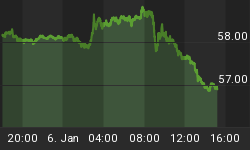Equity prices, like the prices of everything, are determined by the interaction of supply and demand factors. The latest flow-of -funds data from the Federal Reserve have an interesting factoid on the supply-side of the equities-price equation. In the fourth quarter of last year, net issuance of domestic corporate equities totaled $986 billion at a seasonally-adjusted annual rate - a record dollar amount of issuance (see Chart 1). This also was a record issuance relative to nominal GDP - 6.9% (see Chart 2).
Chart 1
Chart 2
Who was doing all of this issuing? Chart 3 shows us that it was the financial system, desperate for new capital to replace a huge amount of old "depreciated" capital, that was doing all the issuing. At a seasonally-adjusted annual rate, financial institutions were net issuers of equity to the tune of $1.4 trillion in the last year's fourth quarter while nonfinancial corporations were net "retirers" of $450 billion of equity.
Chart 3
At the same time the financial institutions were issuing record absolute and relative amounts of new equity, I think it is safe to say that investors' demand for financial institutions' equities was somewhat inhibited. Chart 4 shows that the yield on AA-rated debt issued by financial institutions was rising sharply in both absolute terms as well as relative to AA-rated debt issued by industrial corporations. If investors were becoming much more risk averse with regard to financial institutions' investment grade debt, it stands to reason they were more risk averse with regard to financial institutions' equity capital.
Chart 4
In sum, there is no mystery as to why the broad U.S. stock indexes took a dive in the fourth quarter of last year. It simply was a matter of an increase in supply accompanied a decrease in demand.
















